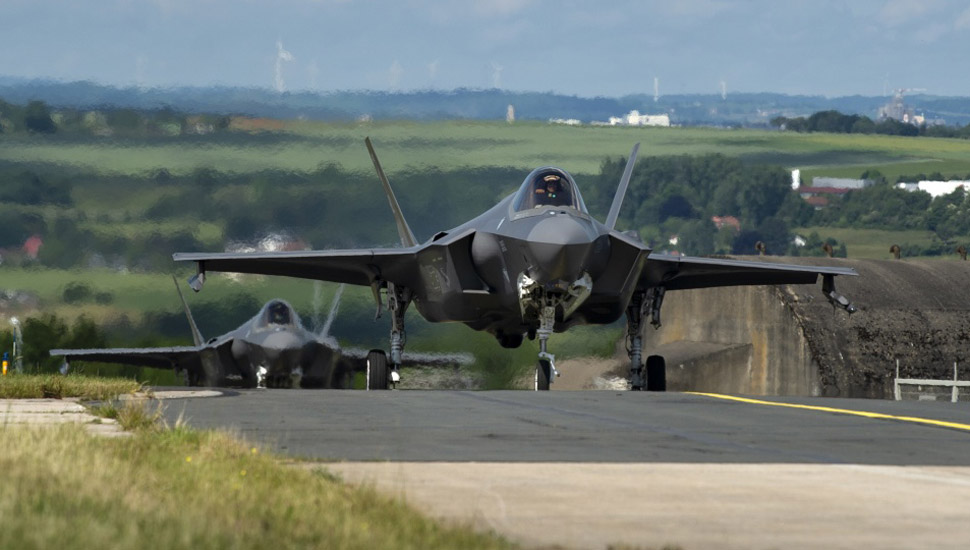The worldwide fighter market could grow by 17.2% over the next decade, representing a total output of 3,401 aircraft.
That production volume would be worth $264 billion in FY2019 dollars, according to a report by Forecast International.
The total number of fighters to be produced from 2019 to 2028 is 17.2% (499 units) higher than the number of aircraft produced during the previous 10 years. Annual production is expected to peak early, at 371 aircraft in 2021 and 2022. Output is then projected to decline through to 2027, to 313 aircraft that year.
The Lockheed Martin F-35 Lightning II will be the largest fighter programme over the next decade, due primarily to its selection as the tactical fighter of choice for the US Air Force, US Navy, and US Marine Corps. Lockheed Martin is expected to deliver 1,548 examples of F-35 – some 46% percent of the market.

DVIDS
The F-35’s dominance is not guaranteed, however, Forecast International says.
“Lockheed Martin must continue to reduce the aircraft's procurement and operating costs if it is to achieve sales expectations on the world market,” the research company says.
In fact, older fighters, such as the Lockheed Martin F-16, Boeing F/A-18E/F, Boeing F-15, Dassault Rafale and Eurofighter Typhoon are seeing continued interest and business from air forces in Asia, Eastern Europe, the Middle East. Even the USAF is considering the F-15EX, partly due to the operating costs of the F-35, Forecast International says.
Outside of the Western sphere of influence, Russian combat aircraft such as the MiG-29 and Su-35 are more prevalent.
China could compete with Russia, although the export programme for its most advanced fighters is not as mature, Forecast International says. China is likely to try to gradually build markets in Africa and Asia.
“[China] offers the JF-17 light fighter in co-operation with Pakistan's PAC on the export market, and this lightweight fighter offers the capability of beyond-visual-range engagements at a lower price than competing US or Russian aircraft,” the company says.
Russia could eventually find an export customer for its Su-57 stealth fighter, and China for its Shenyang FC-31 – although not much is known about the aircraft.
"China and Russia have both developed stealth fighters to compete against the F-35, but the technical capabilities of these low-observable models are difficult to evaluate from the outside," says Forecast International's Douglas Royce. "In any case, Russian and Chinese-built fighters only occasionally compete with Western-built fighters in the international market, so the impact of new Russian or Chinese fighters on Western manufacturers is usually small in any given year."
2019parisairshow
Read all the latest news and information from the 2019 Paris air show on our dedicated page
Source: Flight Daily News






















